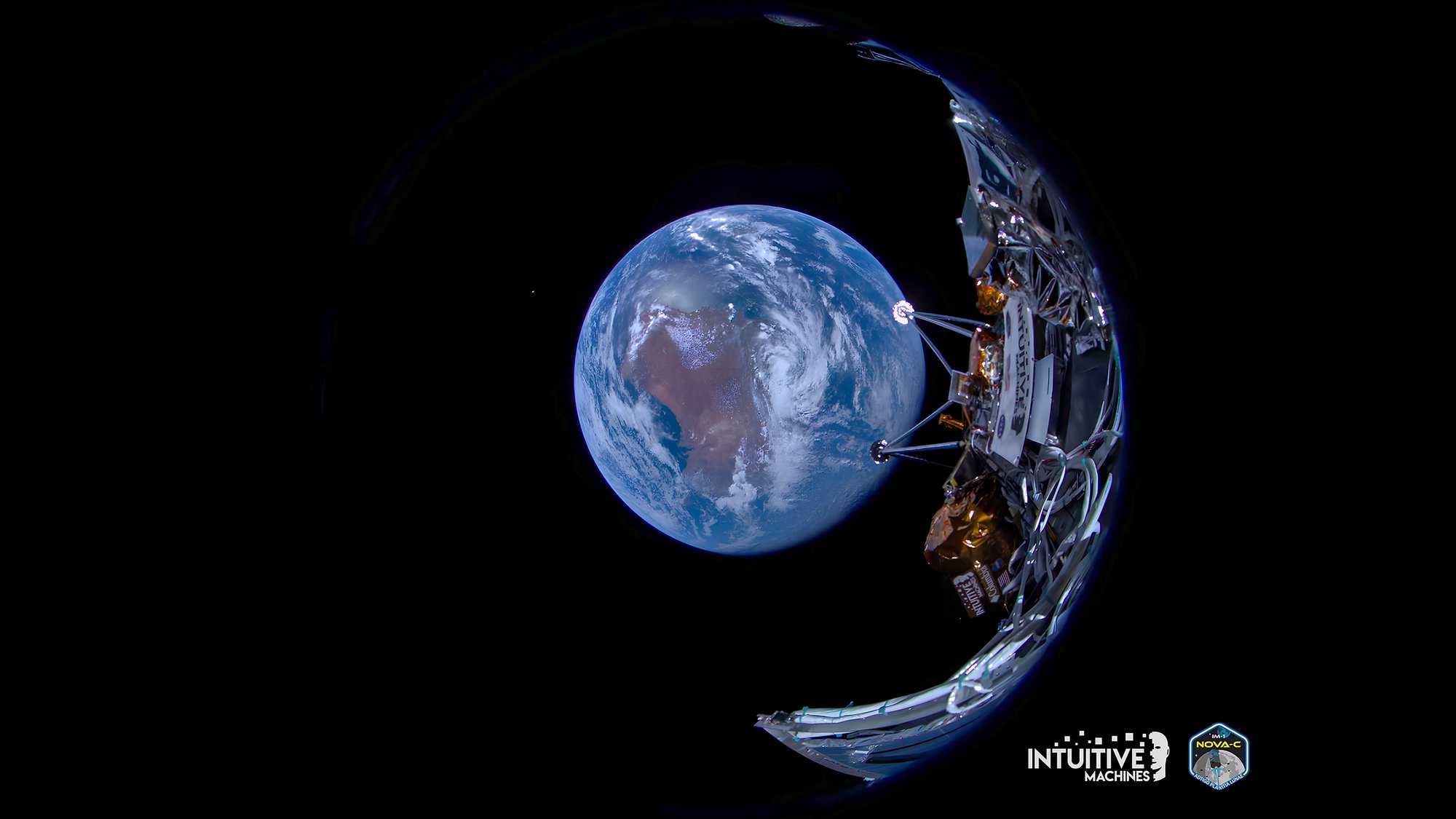

UPDATE, February 23, 2024 9:09 a.m. EST: Odie successfully landed on the moon and has started sending images back to Earth.
After a successful launch, Intuitive Machine’s robotic Odysseus spacecraft (aka Odie) beamed home its first images from space. In a post on X, Intuitive Machines wrote that the spacecraft “successfully transmitted its first IM-1 mission images to Earth on February 16, 2024.” The images were captured one day after the spacecraft blasted off from NASA’s Kennedy Space Center in Florida.
[Related: ‘Odie’ is en route for its potentially historic moon landing.]
According to the Houston-based company, the four images they selected were chosen from hundreds of images taken by the lander’s cameras. These cameras were programmed to take five images every five minutes for the first two hours after Odysseus separated from the rocket’s second stage.
“Out of all the images collected, Intuitive Machines chose to show humanity’s place in the universe with four wonderful images we hope to inspire the next generation of risk-takers,” the company wrote in a statement.
They capture the planet Earth fading into the background as the spacecraft continues on its 230,000-mile journey towards the moon.
Intuitive Machines also announced that Odysseus “continues to be in excellent health” and is communicating with mission control. Odysseus launched one month after Pittsburgh-based Astrobotic’s Peregrine lunar lander failed to complete its mission. The spacecraft burned in the Earth’s atmosphere about 10 days after a broken fuel tank and massive leak caused the mission to fail.
In addition to these first images, Odysseus’ engine also passed a crucial check in deep space over the weekend.
“Intuitive Machines flight controllers successfully fired the first liquid methane and liquid oxygen engine in space, completing the IM-1 mission engine commissioning. This engine firing included a full thrust mainstage engine burn and throttle down-profile necessary to land on the moon,” the company wrote in a post on X on February 16.
[Related: This private lander could be the first US machine on the moon this century.]
If the mission continues to go as planned, Odysseus will land on the moon on February 22, where it would be the first private spacecraft to conduct a successful lunar landing. Only government-funded programs from Russia, China, India, the United States, and most recently Japan have performed a lunar landing.
The lander is aiming to touch down 186 miles away from the moon’s south pole. This region has cliffs, craters, and possibly frozen water. NASA is the main sponsor of the mission, paying Intuitive Machines about $118 million to deliver its payload to the moon. NASA hopes that if this mission is successful it will jumpstart the lunar economy ahead of future crewed missions. The space agency plans to land astronauts there later this decade. The six navigation and tech experiments in the lander’s payload that will collect data critical for these missions.

